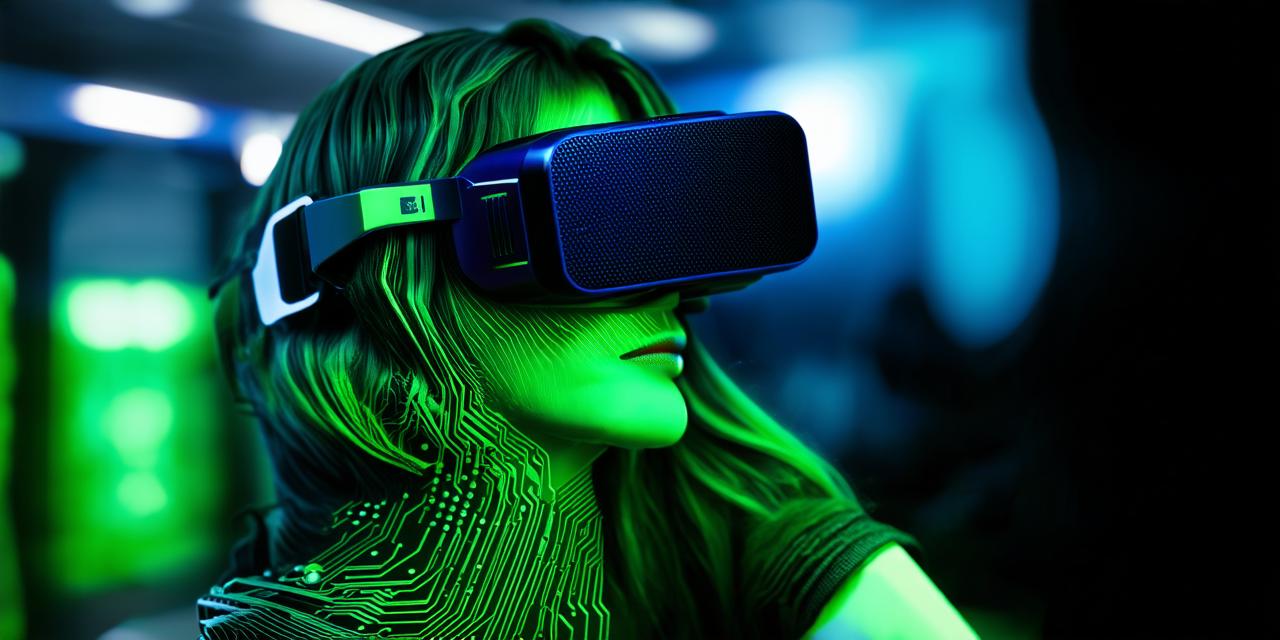Virtual reality (VR) development is an exciting and rapidly growing field that offers endless possibilities for creating immersive and engaging experiences. Whether you’re a beginner or an experienced developer, mastering VR development can be challenging. However, with the right tools, techniques, and guidance, anyone can become proficient in this innovative technology.
1. Start with the basics: Learn programming fundamentals
Before diving into VR development, it’s essential to have a strong foundation in programming fundamentals. This includes understanding key concepts such as variables, loops, functions, and object-oriented programming. There are numerous online resources available for learning programming, including Codecademy, Udemy, and Coursera. Once you’ve mastered the basics, you can move on to VR-specific tools and frameworks like Unity or Unreal Engine.
2. Experiment with VR development tools
One of the best ways to learn VR development is by experimenting with different tools and frameworks. This will allow you to explore various features, capabilities, and limitations of each platform. Some popular VR development tools include:
- Unity: A versatile and widely used game engine that supports both 2D and 3D development, including VR.
- Unreal Engine: Another powerful game engine that offers advanced graphics and physics simulations for VR development.
- SteamVR: An open-source platform for creating VR experiences on PCs.
- Oculus SDK: A set of tools and libraries for developing VR applications for the Oculus Rift.
Experimenting with different tools will help you find the one that suits your needs and learning style best.
3. Build a VR project from scratch
One of the most effective ways to master VR development is by building a project from scratch. This will require you to apply everything you’ve learned about programming, design, and user experience (UX) in a practical setting. You can start with a simple VR application like a virtual tour or a game and gradually add complexity as you gain more experience. Building a project from scratch will also give you valuable insights into the challenges and opportunities of VR development.
4. Learn from successful VR projects
Learning from successful VR projects can be an excellent way to gain inspiration and insight into best practices in VR development. You can analyze case studies, read blog posts, or even attend conferences and workshops to learn from experienced developers and designers. Some popular VR projects that you can study include:
- Beat Saber: A rhythm game for the Oculus Rift that has become a cultural phenomenon.
- Tilt Brush: A virtual painting application that has inspired countless artists and creators.
- Job Simulator: A humorous simulation of office life for VR headsets.
Studying successful VR projects can help you identify patterns, trends, and best practices in VR development.
5. Collaborate with other VR developers
Collaborating with other VR developers can be an excellent way to learn new techniques, share ideas, and get feedback on your work. You can join online forums, attend meetups, or even participate in hackathons to connect with like-minded individuals who are passionate about VR development. Collaboration can also help you build a network of contacts and mentors who can provide guidance and support as you continue to learn and grow.
6. Stay up-to-date with the latest VR trends and technologies
VR is a rapidly evolving technology, and staying up-to-date with the latest trends and developments is essential for mastering VR development. You can read industry publications, attend conferences, or follow influential individuals in the VR community to stay informed about new tools, frameworks, and techniques. Some popular VR technologies and trends that you should keep an eye on include:
- Augmented reality (AR): A technology that overlays digital content onto the real world, offering new possibilities for VR development.
- Haptic feedback: The ability to simulate physical sensations in virtual environments, making them more immersive and realistic.
- Wireless VR headsets: Devices like the Oculus Quest 2 that offer a more accessible and convenient way to experience VR without cables or wires.
Staying up-to-date with the latest VR trends and technologies can help you stay ahead of the curve and continue to push the boundaries of what’s possible in this exciting field.
FAQs
Here are some frequently asked questions about VR development:
1. What skills are required for VR development?
To become proficient in VR development, you need strong programming fundamentals, a passion for design and UX, and a willingness to experiment and learn from your mistakes.
2. How do I choose the right VR development tool?
The best VR development tool for you depends on your needs, learning style, and experience level. Experiment with different tools to find the one that suits you best.
3. Can I learn VR development without prior programming experience?
While some knowledge of programming can be helpful, it’s not strictly necessary to learn VR development. However, having a strong foundation in programming fundamentals can make the learning process smoother and more effective.
4. How do I get feedback on my VR project?
You can get feedback on your VR project by sharing it with other developers or designers, attending meetups or conferences, or even submitting it to online communities or forums.
5. What are some resources for learning VR development?
There are numerous resources available for learning VR development, including online courses, tutorials, documentation, and community forums. Some popular resources include Unity and Unreal Engine documentation, Udemy courses, and Stack Overflow forums.
Summary
Mastering VR development requires a combination of skills, knowledge, and passion. By starting with the basics, experimenting with tools, building projects from scratch, learning from successful examples, collaborating with others, and staying up-to-date with the latest trends
